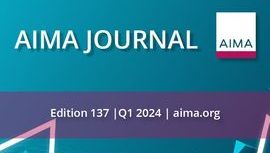ESG in funds finance
By Jen Yee Chan; Anika Rahman; Karina Brown, Simmons & Simmons
Published: 30 November 2021
Introduction
ESG has increasingly become a key consideration in funds financing transactions for both lenders and funds alike. Recent events like COP26 have generated an increased focus on what the funds industry and their lenders are doing to tackle the climate emergency and other environmental, social and governance issues.
This article explores some of the key documentation trends emerging in the funds finance market.
Documentation trends: Fund finance ESG
Two primary products are being used in the provision of sustainability-linked finance in the funds finance space: notably, firstly in the form of a traditional revolving corporate facility, and secondly, in the form of a subscription-line facility with built-in ESG provisions. Green loans (i.e., those that specify in the ‘use of proceeds’ the specific purpose that any funds advanced need to be utilised for) are less commonly used in the UK and European market as they are considered to afford the fund with less flexibility and thus remain less popular to date.
Despite the bespoke nature of many ESG-linked funds finance facilities, many of these now have recognisable sustainability-linked features, some of which we mention below. We note these remain to be developed as the market continues to evolve.
- Margin/pricing: Similar to sustainability-linked loans in the corporate space, whilst initially margin adjustments have been one way or binary with an increase or reduction dependent on compliance with the ESG pre-defined criteria and/or key performance indicators (KPIs), we are increasingly seeing a more dynamic structure with the margin ratchet fluctuating both ways. Equally, the range of adjustment in respect of some facilities is being pegged to the number of sustainability criterion and/or KPIs being met. There have also been discussions around the application of any margin savings/premiums and whether this should be ring fenced for specific ESG related purposes.
- Representations: Tailored representations are being included on the compliance by the fund parties with all laws, regulations and/or policies which are key or central to the sustainability framework for the specific fund. A representation is now also commonly made that all information provided in connection with such sustainability framework and sustainability performance targets is true, complete, and accurate in all material respects.
- Information undertakings: Information undertakings specific to the sustainability framework are typically expected. The specific drafting of these depends on the ability of the GP or the manager to provide periodic qualitative or quantitative reporting on its KPIs. The frequency of reporting and methodology of disclosure, as well as the use of any external third party to facilitate the meeting of any reporting requirements, are generally negotiated on a case-by-case basis and tailored to the sustainability framework of the fund.
- Reporting: Finance parties may be granted additional rights to review, certify, and verify any individual rating or information provided in respect of the sustainability framework. However, this largely depends on whether the fund parties will be self-certifying compliance with the sustainability framework and KPIs or the extent to which an external third party is involved in these instances. Reporting on sustainability performance targets and KPIs to the finance parties is typically seen to be provided at least once per annum. The use of external third parties to report on the sustainability framework largely depends on the status of the fund’s internal ESG framework and its advancement. Where a fund already has rigorous established processes for ESG then it should be queried whether additional costs in outsourcing any reporting requirements are necessary or required.
- KPIs: KPIs (or key performance indicators) are often included to monitor compliance of the fund with the overall sustainability framework. The substantive KPIs, their nature, number and complexity will depend on the sector(s) in which the fund and its investments are made. The trend has been to select KPIs that are industry-specific based on the activity of investments and/or portfolio investments and which the GP, manager and LPs are able to actively monitor and assess. The United Nation’s supported Principles for Responsible Investment (UNPRI) published guidance on ESG specific KPIs, as well as industry guidance from the Sustainability Accounting Standards Board and the European Federation of Financial Analysts Societies as well as organisations like Science Based Targets, provide some basis for KPI-modelling for funds in funds finance transactions. The weighting of specific KPIs in terms of monitoring compliance with the relevant sustainability performance targets will depend on what is being measured as well as its importance to the fund’s overall ESG framework.
- Events of default: Whilst it is uncommon for a breach of the sustainability framework or sustainable performance targets to specifically lead to an event of default, typically, a failure to report on ESG KPIs will lead to an event of default under the facility agreement. However, it is noted that different lenders take varying approaches on this. Depending on the negotiated position, a breach of any reporting obligations or failure to deliver information may lead to a drawstop in further loans or result in a pricing adjustment alone instead of triggering an event of default.
- Side letter provisions, private placement memorandums (PPMs) and limited partnership agreements (LPAs): It is not uncommon to see ESG-related provisions being included in fund terms, whether in the PPM, LPA or in side letters to formalise the parameters of how the fund may invest in a manner that is compliant with its ESG framework. ESG provisions in fund terms typically encompass: (i) commitments to ESG policy and/or regulation; (ii) investment restrictions and the decision-making process, (iii) exclusion or excuse rights; and (iv) ESG reporting and incident reporting to limited partners. Fund participants may look to ease the process by including such provisions where possible directly in the LPA, or alternatively in a side letter with the GP. However, it should be noted that there may be reluctance amongst participants to include responsible investment or ESG related language formally in an LPA or side letter where, for instance, the fund’s ESG framework is still developing or where there is doubt in making a principles-based or value-based policy legally enforceable.
The market view: LPs and GPs
There appears to be strong indication in the market that LPs are being increasingly driven by ESG issues; for example, there are reports of carried interest being linked to ESG targets.
Globally, some of the largest public funds and pension funds have been actively exploring commitments to buyout and fund managers whose strategies are aligned to climate change and energy transition. General partners (GPs) are additionally factoring in ESG due diligence in the fund’s decision making. Some of the most prominent GPs in the market already have well established ESG frameworks in place to support their investments and assess ESG risks. LPs in turn have turned their interest to ESG factors, demanding more from their GPs on ESG, including increasingly relying on GPs to provide ESG-specific reporting relevant to the fund.
Many GPs are already developing ESG codes to address aspects relevant to their portfolio companies and the sectors in which they operate. As part of the process, some GPs have engaged ESG experts whether internally and/or externally to ensure that adequate ESG metrics are included in the fund’s disclosure and in management reporting to meet LP demands.
Not only is implementing ESG seen to be key for new investments, but the tracking and maintenance of ESG policies and metrics are necessary in order to verify the adequacy of and any progress made in the existing portfolio and, in some cases, preparing for an exit prior to divestment.
The market view: Deal trends
The funds finance market has seen a lot of recent activity in ESG-linked loans some examples of which, taken from publicly available information is set out below.
- ING’s sustainability improvement capital call facility to Singapore-based Quadria Capital Management in 2019
- Standard Chartered and Morgan Stanley financed one of the first sustainable ‘use of proceeds’ fund financing loans with KKR’s Global Impact Fund in 2020. KKR will use proceeds to bridge investments in companies that are providing commercial solutions for environmental or social problems in line with the United Nations Sustainable Development Goals
- Swedish firm EQT has an ESG-linked fund level bridge facility with an upper level of €5bn, backed by BNP Paribas, SEB and others. The facility is intended to improve portfolio companies' ESG performance by linking sustainability objectives to financial incentives
- Carlyle launched a €2.3 bn ESG-linked umbrella debt facility in Sept 2021 with targets that include getting 100% of its majority-owned companies to disclose carbon emissions footprint data, achieving 30% board diversity across its majority-owned portfolio companies over the next three years and improving governance by providing ESG-competent board training for all Carlyle board directors.
Conclusion
ESG is, and continues to remain, a focal talking point and key consideration in structuring fund finance transactions. The drivers behind ESG-linked financings derive not only from lenders but also from LPs themselves. As a result, our view is that ESG-linked funds finance transactions will continue to increase and evolve over time driven both by regulatory changes and investor needs.







